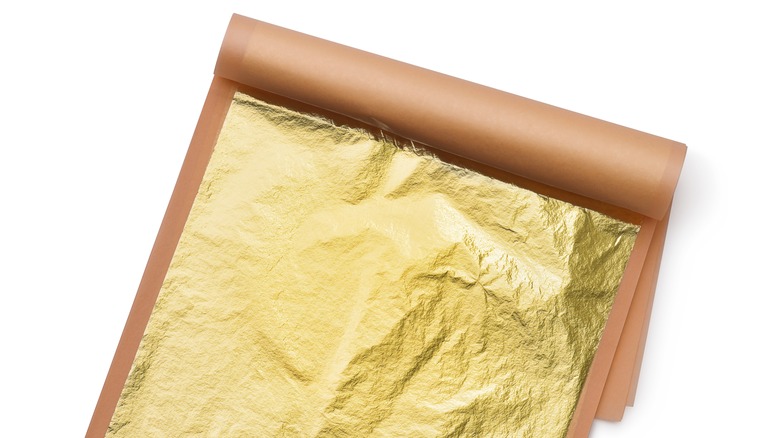The Historic Rationale For Eating Gold
If you've ever ventured to the Ainsworth in New York City, you may have ordered their gold-coated chicken wings. The wings, which look like they've been wrapped in gold aluminum foil, are soaked in seasonings and then sprinkled with 24-carat gold flakes. You can get 10 wings for around $45, or spend a month's rent to get 50 wings and a fancy bottle of champagne. This may sound more like a schtick than an actual culinary experience, but that's typically how gold is served these days in food.
It's pretty to look at, feels fancy to order, and might be a sign of wealth, considering how expensive gold-studded foods are. The price of The Ainsworth's chicken wings pales in comparison to some of the more expensive foods out there — a gold-filled grilled cheese (with truffle butter and champagne bread) at Serendipity in NYC comes out to a mere $214, while the restaurant's golden sundae will set you back $1,000. But gold meals weren't always the flashy display of aesthetics that they are today — back in the day, people loved eating the precious metal for other reasons.
Gold was considered an ancient fountain of youth
Back in the second millennium B.C., ancient Egyptians weren't using gold to top their chicken wings or stuff their grilled cheese. Gold represented a way to get closer to their gods, so they decorated their tombs with it, painted their gods' skin with it, and ate it to try to align themselves closer to their divine powers. In ancient Alexandria, alchemists even created a beverage made from liquid gold that was meant to cleanse the body of disease. And since gold doesn't age, the Egyptians believed it would also help them remain youthful if they consumed it. They weren't the only ones who thought the metal had health benefits, however.
In Europe, it was used as a candy garnish with the hope of protecting consumers from heart disease. In the Middle Ages, gold was also believed to contain magical powers that would rub off on food during cooking. But make no mistake, the metal was also used as a fancy decoration and a way to show off wealth. One recipe fit for a prince, found in a 15th-century Italian cookbook, featured gold-covered meats like ham and mortadella and was actually served to the Prince of Capua. Today we mostly use gold as a fancy food decoration, but if you ever get the chance to try it, now you know it has a history as rich as its consumers.

